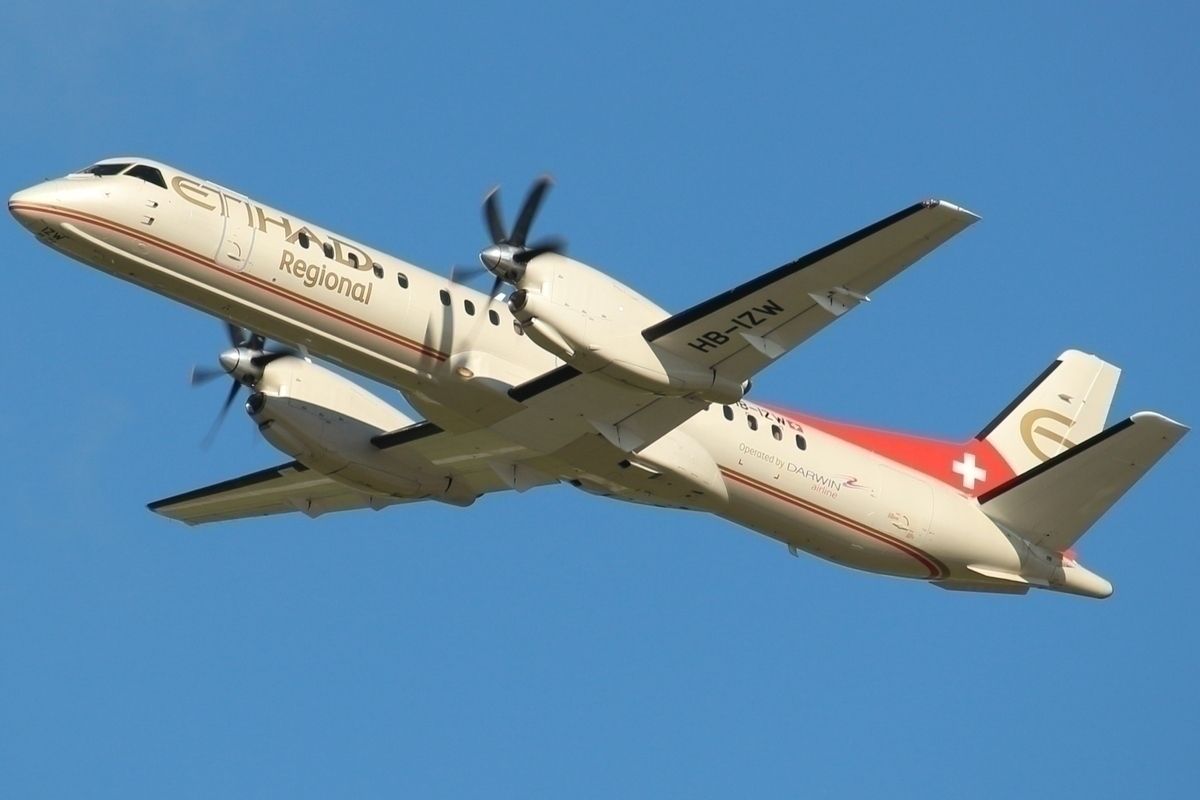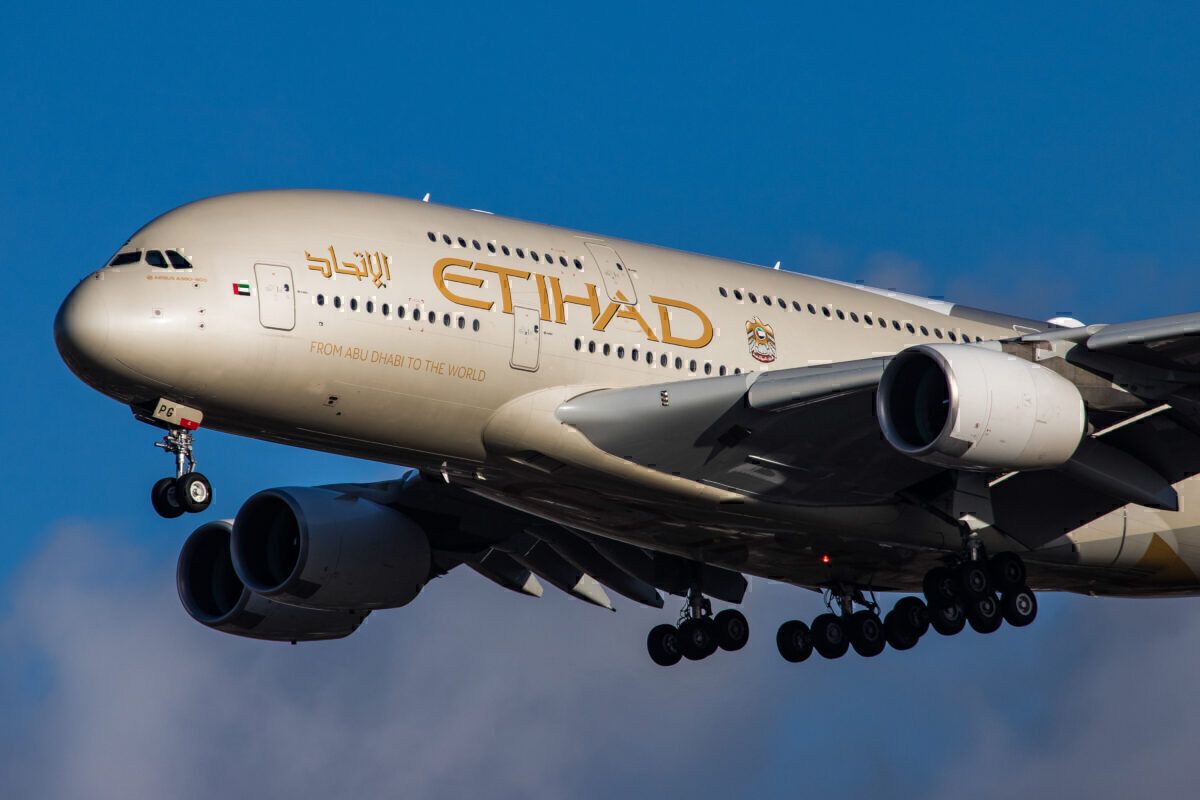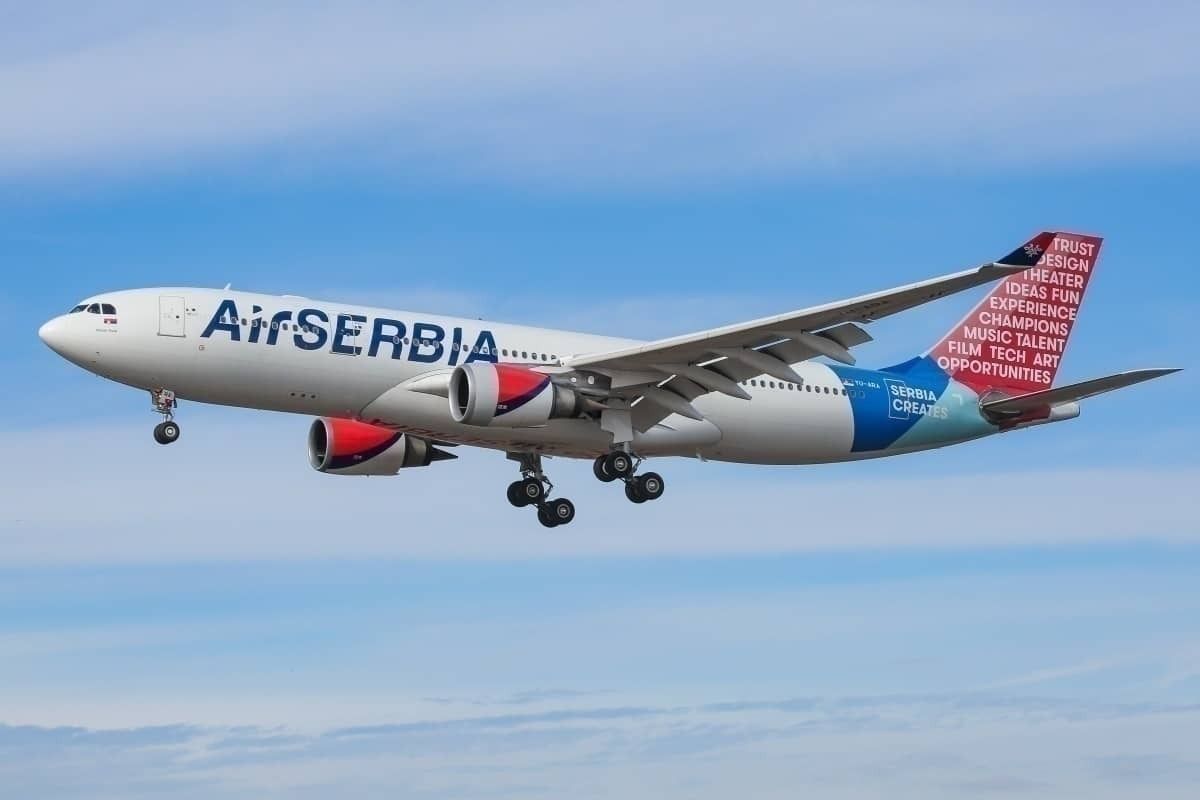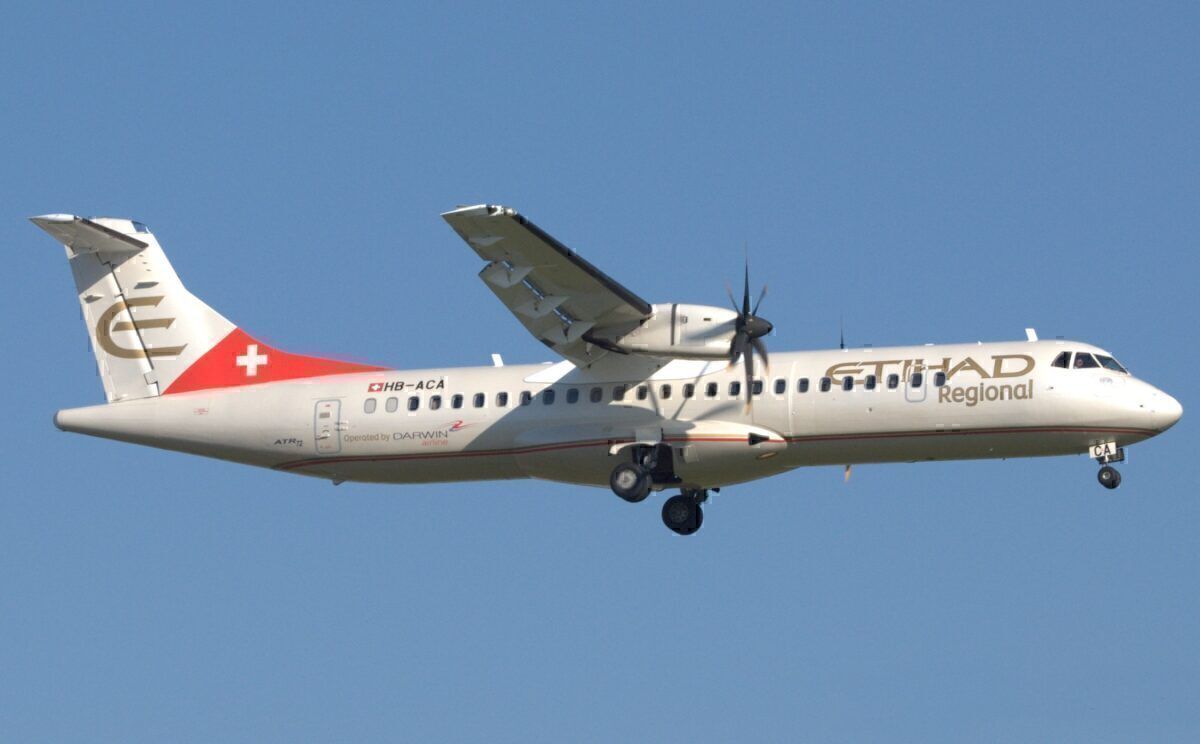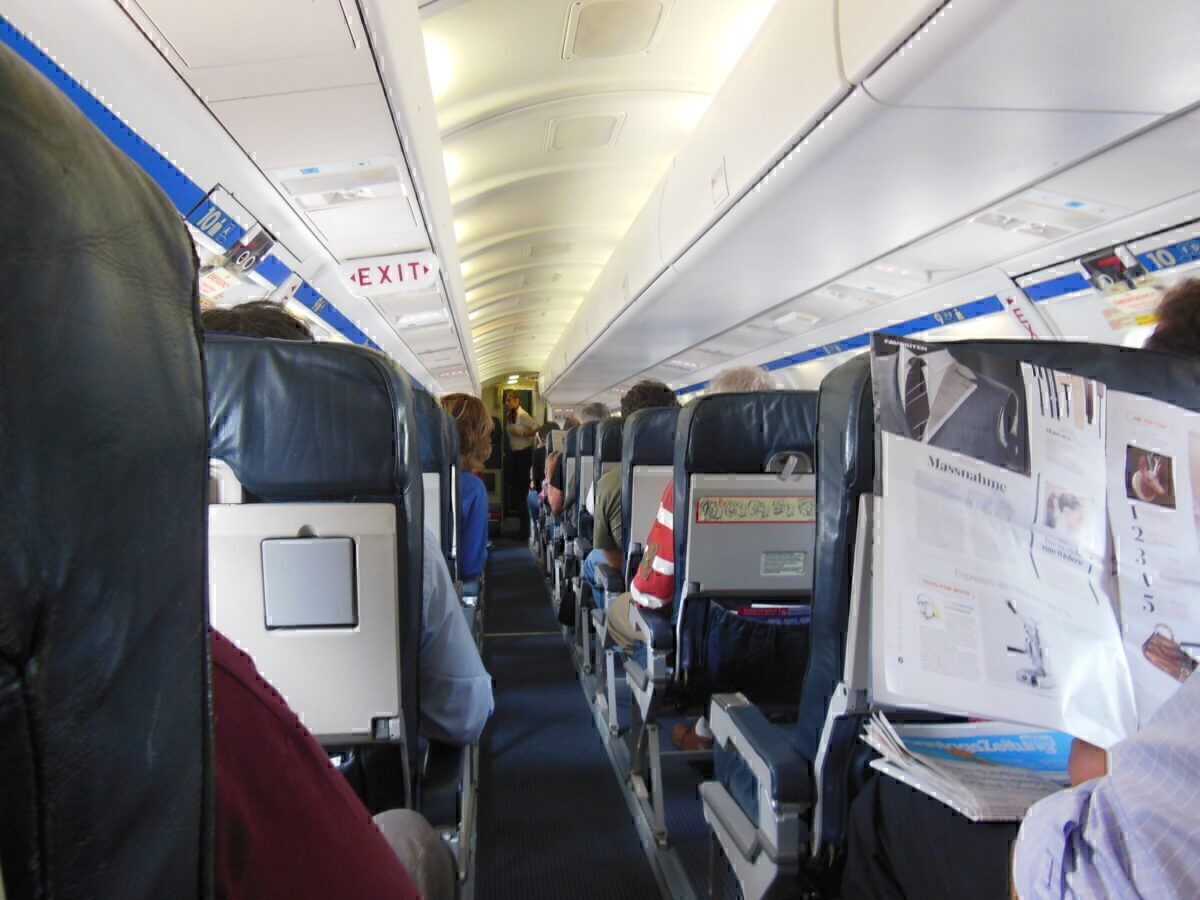To understand what happened to Etihad Regional, you must first understand the thinking behind the Gulf carrier's mindset at the time of the purchase to understand why it would want to invest in a tiny Swiss regional airline. The notion of creating an airline for Abu Dhabi was the brainchild of future UAE president Sheikh Khalifa bin Zayed Al Nahyan. In 2003 the future leader decided to create Etihad Airways, the UAE's second airline behind Emirates. Etihad loosely translates as meaning "together or join in as one."
Fellow Al Nahyan family member, Sheikh Ahmed bin Saif Al Nahyan founded the airline with an initial paid-up capital of more money than you can shake a stick at, before embarking on a ceremonial flight to Al Ain near Abu Dhabi's border with Oman. On November 12, 2003, Etihad commenced operations with a flight from Abu Dhabi International Airport (AUH) to what was then still called Beirut International Airport (BEY).
Etihad placed a massive order
In the summer of 2004, Etihad placed an order with Boeing for five 777-300ERs and with European planemaker Airbus for 24 aircraft, including four A380s. Combined, the order was believed to be worth around $8 billion.
The state-owned airline then stunned the world during the 2008 Farnborough Airshow when it followed up with the largest commercial aviation order ever for 205 planes consisting of a firm order for 100 aircraft, 50 options, and a further 55 purchase rights.
Etihad first made a profit in 2011
While expanding like there was no tomorrow, the Abu Dhabi-based airline posted its first-year net profit of $14 million in 2011, a figure that was in line with CEO James Hogan's plan that was announced in 2006.
With its rapid growth and now turning a profit, Etihad started to look for other airlines to invest in. The first one to catch the Gulf carrier's eye was at the time the sixth biggest European carrier Air Berlin of which Etihad took a 29.21% stake. This was quickly followed up with a 40% share of Air Seychelles, a 10% stake in Virgin Australia, and a nearly 3% share in Irish national flag carrier Aer Lingus.
In August of 2013, Etihad made one of its boldest moves when it bought a 49% stake in Belgrade Nikola Tesla Airport (BEG)-based Serbian national airline Jat Airways, soon after rebranded as Air Serbia.
Darwin Airline is rebranded as Etihad Regional
In November of the same year, Etihad turned its attention to Swiss regional carrier Darwin Airline which flew under the brand name Adria Airways Switzerland. Based in the southern Italian-speaking city of Lugano, Adria focused its attention on well-heeled Swiss business travelers.
Following Etihad's 33% purchase of Darwin, it was decided that the airlines' aircraft would be painted in Etihad livery and operate under the name Etihad Regional with the subtitle "operated by Darwin Airline." When speaking about the acquisition and its plans, business travel website Executive Traveller quotes former Etihad CEO James Hogan as saying:
"We are creating a unique approach to network development for global airlines. European travelers will now be able to connect from a far, far wider range of European towns and cities on Etihad-branded aircraft, through Abu Dhabi to our destinations worldwide."
The first aircraft to be painted in Etihad livery began short regional flights between Lugano Airport (LUG) and Geneva Airport (GVA) on 17 January 2014. The airline also announced that all nine of its Saab 2000 aircraft would be repainted in Etihad livery before the summer.
Etihad Regional used its fleet of Saab 2000 aircraft to forge a new network map across Europe by offering passengers direct flights from Switzerland to dozens of major cities. Etihad Regional also took advantage of Air Berlin and Air Serbia hubs.
About the Saab 2000
Manufactured in Linköping in southern Sweden, the Saab 2000 is a twin-engined turboprop aircraft designed to carry between 50 and 58 passengers. Basically, a stretched derivative of its successful Saab 340 twin-turboprop regional airliner, the Saab 2000 could cruise at a speed of 665 km/h (413 mph) and had a range of 2,868 km (1782 miles).
While the Saab 2000 saw some initial success, production ceased in 1999. It could not compete with newly introduced regional jets like the Bombardier CRJ series and the Brazilian-built Embraer ERJ 145 family that provided better performance and comfort for around the same initial price.
Etihad regional faced stiff competition
As well as its fleet of Saab 2000s, Etihad Regional also leased four ATR 72-500s from Nordic Aviation Capital to expand its routes from Geneva.
As it turns out, things did not go as planned, with reports in 2015 suggesting that Etihad Regional was facing stiff competition from Swiss International Air Lines. In February 2015, Etihad Regional canceled destinations like Toulouse, France, and Linz, Austria, and announced that it would be shedding a fifth of its workforce.
In the same month, Etihad Regional canceled two-thirds of its scheduled routes without giving any notice. Still, it continued to operate some flights from Lugano and Geneva while blaming competition and the Swiss aviation authorities for its failed expansion.
In March, Darwin Airline, who operated Etihad Regional, said that it would start flying some of its Saab 2000s on behalf of Air Berlin, a low-cost carrier in which Etihad also had a stake. A month later, all four of its leased ATR 72s started flying domestic routes for Italian national carrier Alitalia, another airline in which Etihad had invested in.
Etihad Regional was sold to Adria Airways
After having licked its wounds, Etihad and Darwin Airline decided to sell Etihad regional to Slovenia's Adria Airways in 2017, signaling a retreat from the Gulf carrier's massive expansion plans. When detailing the sale to Adria Airways, Executive Traveller reports Chief Strategy and Planning Officer of Etihad Aviation Group Kevin Knight as saying:
"The decision to sell this minority stake in Darwin is the result of our current strategic review of our investments and the choice to focus on our other partners."
Looking back on Etihad's decision to buy a stake in Darwin Airline, it certainly looks like a bad move, as was the cash-rich airline's decision to invest in Air Berlin and Alitalia.
Did you ever get a chance to fly with Etihad Regional? If so, we would love to read about what it was like in the comments.

